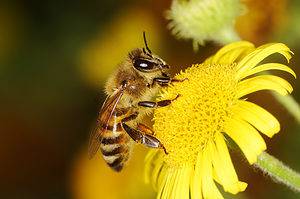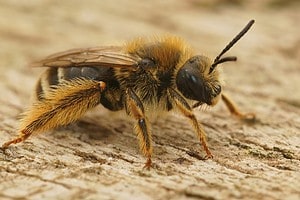Amidst a decades-long population drop off, eight states have seen American bumblebees disappear. Maine, Rhode Island, New Hampshire, Vermont, Idaho, North Dakota, Wyoming, and Oregon have lost their bumblebees to a growing trend that’s dwindled the once ubiquitous pollinator to a fraction of its former glory. Over the previous twenty years, scientists estimate there’s been an 89 percent drop in population.
And it’s getting worse. Across the Midwest, their numbers dropped 50 percent, and in northern Illinois, nearly three-quarters vanished. New York may add its name to the list of states that have lost the insect entirely, where numbers have declined 99 percent. Once the most common in the country, the American bumblebee now faces potential extinction.
This is why some wish to include them on the Endangered Species List.
Race To Protect Before Bumblebees Disappear Forever
In response to the alarming data, a group of conservationists hopes to curb the downward trend with federal action. A joint effort between the Center for Biological Diversity and the Bombus Pollinator Association of Law Students at Albany Law School submitted a petition for the inclusion of the American bumblebee on the Endangered Species List.
Earlier this year, the U.S. Fish and Wildlife Service conducted a preliminary 90-day review, concluding such a proposal had merit. Now, the next phase will be a one-year period of rigorous observation and review. During this time, the service evaluates the various existential threats and makes an ultimate decision. Jess Tyler, a scientist working at the CBD, said in a statement, “To survive unchecked threats of disease, habitat loss, and pesticide poisoning, American bumblebees need the full protection of the Endangered Species Act right now.”
Presently, no laws protect the American bumblebee, despite its precipitous decline. Two types of bumblebees presently enjoy protections under the ESA, the rusty patched bumblebee and Franklin’s bumblebee.
Biologists witnessing the bumblebees’ disappearance have observed a variety of causes negatively impacting populations. These range from the use of pesticides to competition with non-native species to climate change. As the globe heats up, the American bumblebee, with its round body covered in a fuzzy coat, struggles to adapt. Originally evolved for colder environments, rising temperatures impact its ability to nest and mate.
However, the most harmful may be the use of pesticides. The CBD noted the states with the biggest drop-offs also feature the greatest increase in pesticide use. Neonicotinoids, deployed across crops, interfere with the bees’ homing system. Additionally, pesticides impact their ability to communicate with other bees via their unique dances, as well as weaken their immune system to make them increasingly vulnerable to various parasites.
If the American bumblebee were to attain endangered status, such pesticides would incur hefty fines, to the tune of $13,000, if they’re found to disrupt local populations.
What Happens If American Bumblebees Vanish?
As a prominent vector for pollination, the American bumblebee’s role in its ecosystem serves a wide variety of plant and animal life. It is a vital part of agriculture, pollinating both wildflowers and crops. Globally, insects pollinate over a third of all crops, of which the American bumblebee contributes significantly. They’ve proven themselves the best pollinators of berries, squash, and tomatoes.
While many species adapt to climate change by migrating north where temperatures warm into their habitable range, the American bumblebee fails to establish new territory. Instead, its range has shrunk considerably. A study conducted in 2015 found this loss of range amounted to over 180 miles, limiting their ability to pollinate across vast swaths of land.
The study’s lead author, Jeremy Kerr, a biologist at the University of Ottawa, said, “Global warming might be the kind of threat that causes many of them to disappear for good.”
Though the exact consequences remain unknown, if American bumblebees disappear entirely, agriculture undoubtedly suffers, as well as the diversity and range of many wild plants. The agricultural chain relies on bumblebee species to support the yearly harvest cycle. Declines in Europe mirror those in the United States, making the story of the American bumblebee a microcosm of a greater problem.
Already, cherry, apple, and blueberry declines in recent years chart the impact of dwindling bee populations. Other crops like coffee, almonds, and cocoa rely on bees to pollinate. Former director of the Food and Agriculture Organization at the UN, José Graziano da Silva, suggests a world without bees loses these crops, as well. “The absence of bees and other pollinators would wipe out coffee, apples, almonds, tomatoes, and cocoa to name just a few of the crops that rely on pollination,” he said in a statement.
Perhaps with protected status, the American bumblebee’s future will be brighter than its present, but it will require a radical change in the way humans interact not only with the buzzing black and yellow insects, but with their environment, as well.
The photo featured at the top of this post is © Brier Mitchell/Shutterstock.com
Sources
- Smithsonian Magazine, Available here: https://www.smithsonianmag.com/smart-news/american-bumblebee-has-vanished-from-eight-us-states-180978817/
- Center for Biological Diversity, Available here: https://biologicaldiversity.org/w/news/press-releases/american-bumblebee-takes-step-toward-endangered-species-act-protection-2021-09-28/
- LiveScience, Available here: https://www.livescience.com/american-bumblebee-endangered
- National Wildlife Federation, Available here: https://blog.nwf.org/2020/04/how-you-can-help-our-disappearing-bumble-bees/
- Food and Agriculture Organization of the United Nations, Available here: https://www.fao.org/news/story/en/item/1194910/icode/
- Backyard Beekeeping 101, Available here: https://backyardbeekeeping101.com/bumble-bees-vs-honey-bees/
FAQs (Frequently Asked Questions)
What’s the difference between bumblebees and honeybees?
One major difference may be found right in their names. Honeybees manufacture honey while bumblebees buzz around their environment foraging in different plants. Also, perhaps chief among their differences is origin. Honeybees are domesticated insects used in the production of honey. Bumblebees remain wild, unmodified by human hands. While they produce small amounts of honey, they don’t mass produce it seeing as how they sleep through the winter. Bumblebees also nest in the ground, whereas honeybees create hives up high.
In terms of physical appearance, bumblebees are round and hairy. Honeybees are slender and smaller, often mistaken for wasps. For more on the differences between wasps and bees, check out this article.
Thank you for reading! Have some feedback for us? Contact the AZ Animals editorial team.






